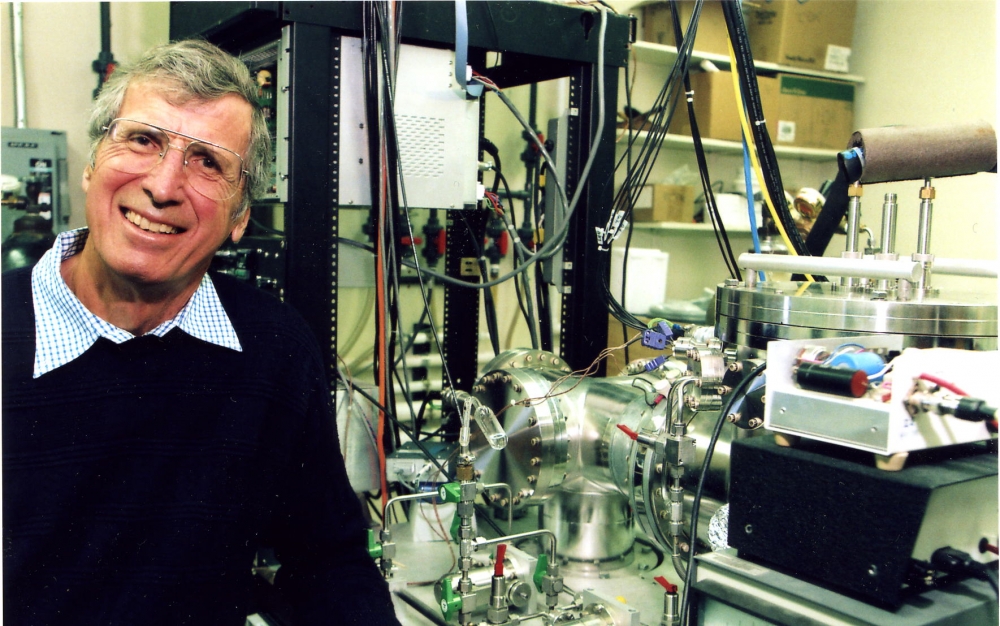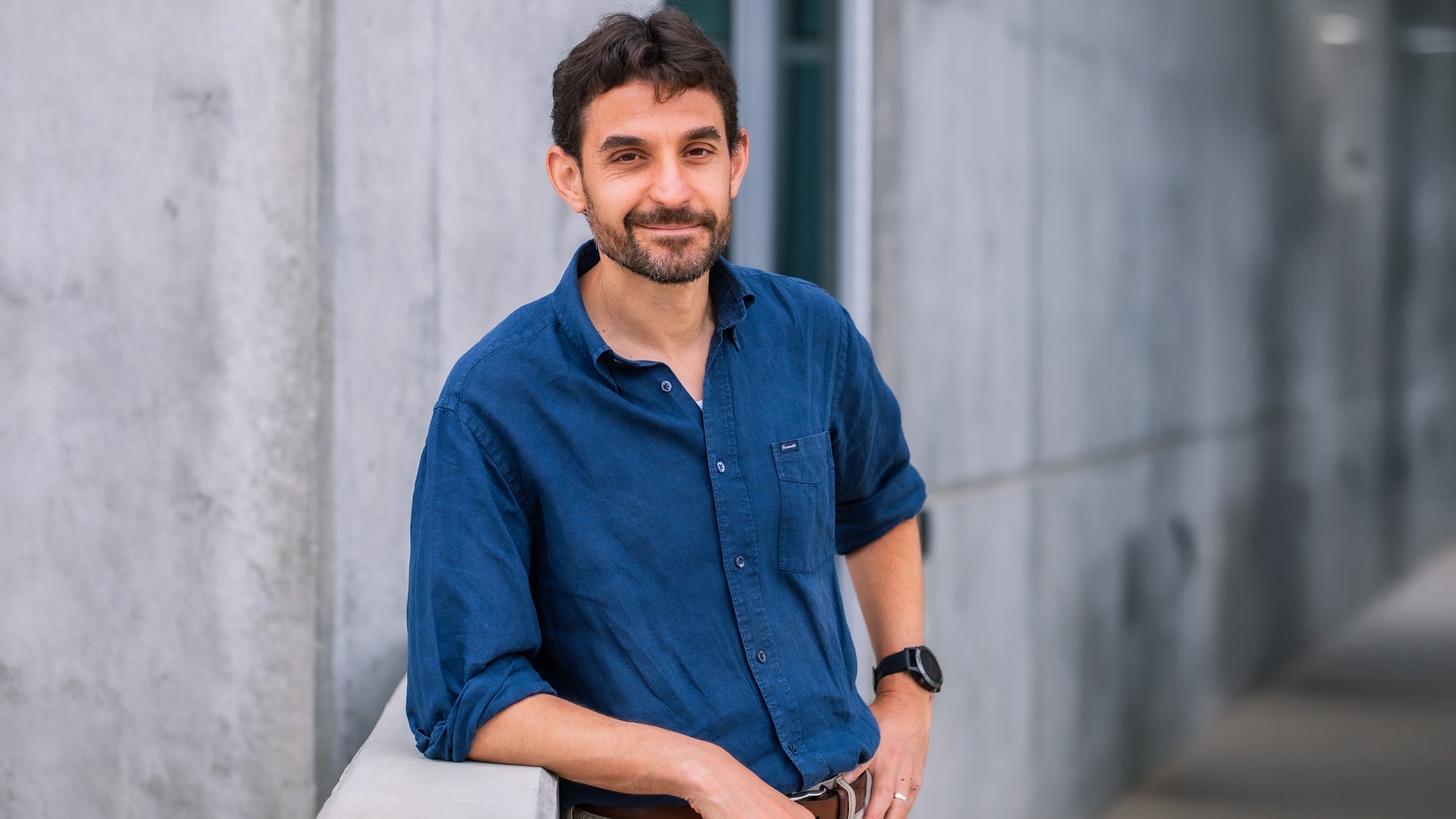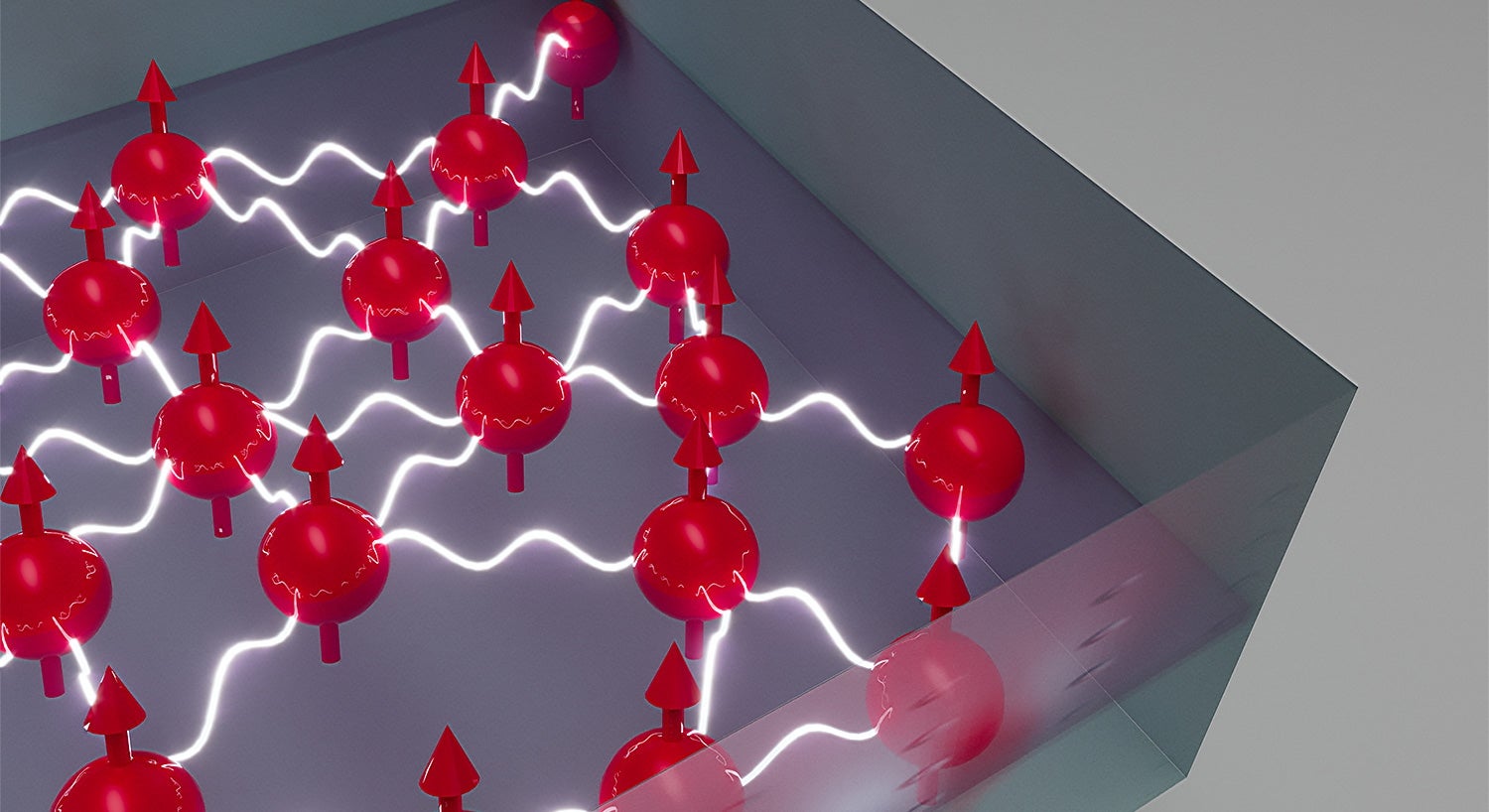
A completely new approach to the study of Alzheimer's disease, initiated by a professor at the University of California, Santa Barbara, may solve a critical piece in the puzzle of the disease. This tragic neurological illness progressively erases memory in its millions of victims. The key to the new approach is understanding the way certain proteins in the brain fold, or rather "misfold."
Michael Bowers, a professor in the Department of Chemistry and Biochemistry, developed this project, which is being funded by the National Institutes of Health. Bowers's laboratory will receive $1.3 million of the total $9 million project grant, plus biological samples worth an additional $500,000.
The grant covers a five-year period. Four institutions are involved.
Bowers is using specialized chemical research methods and applying them to biology. His research will depend upon the study of rare peptides, or strings of amino acids, that are difficult to produce. These will be provided by co-investigator David Teplow, a professor at UCLA's David Geffen School of Medicine, who has been involved in Alzheimer's research for over 10 years. Joan-Emma Shea, also a professor in UCSB's Department of Chemistry and Biochemistry, heads the theoretical modeling aspect of the project.
"Until about five or six years ago, everyone assumed that the large amyloid plaques, or neurofibrillary tangles, that were found in the brains of Alzheimer's victims were the cause of the disease," said Bowers. "However, recent scientific discoveries indicate that these large, insoluble aggregates might merely be markers of the disease -- they do not cause the disease. Rather, smaller soluble oligomers, or peptide complexes, are now felt to be the causative agents, and I find that very interesting."
He explained that now the hunt is on for the "small stuff." Because of their expertise in certain chemical methodologies, Bowers and his research group are able to track down the molecular level changes that lead to development of the disease.
The process of aggregation of proteins that cause the plaque begins in a way that Bowers has begun to clarify. The goal is to find non-toxic drugs that will interrupt the aggregation process. "If we can do that, we can stop the disease," said Bowers. "However, once you start losing neurons, things become very difficult, because the body doesn't
readily replace them due to their very large size. If we could find a marker, early on, to indicate when the patient first has the disease, then the new drug or drugs that we hope to develop could prevent further damage."
Bowers described his approach as a whole new way to determine the structure and composition of the Abeta 42 peptide and its oligomers that are primarily responsible for Alzheimer's disease.
The research team is analyzing the way this peptide folds, causing it to aggregate and disrupt neuronal function.
"In biology, structure and function are tightly coupled," said Bowers.
"When it became clear that small soluble oligomers were most probably the toxic agents, I realized our ion mobility methods could contribute, since we could measure the oligomer distribution and shapes of these peptides for the first time."
Three years of preliminary work convinced the National Institutes of Health to provide funding. "In the last several months, I believe we have uncovered the identity and shape of the primary toxic oligomer," said Bowers. "Our results are consistent with findings on transgenic mice, recently published in the journal Nature, indicating that soluble oligomers with masses matching those we have identified have been extracted from the brains of the diseased animals."
The transgenic mice that Bowers refers to are laboratory mice that have had the gene that creates the Abeta 42 precursor protein spliced into their genome. This process has been shown experimentally to produce memory loss in the animals.
The key aspect of ion mobility is its ability to measure accurate cross sections of complex aggregations of proteins and obtain information on their three-dimensional shape. When coupled with mass spectrometry, electrospray ionization, and high-level molecular modeling, it becomes a very powerful technique.
The experiment starts with electrospray ionization, a method of spraying the solution containing the peptides of interest into fine droplets and then letting the droplets evaporate.
Following evaporation, mass spectrometry is employed to determine the mass or weight of the species that were in the solution, and from that to determine the composition. Finally ion mobility is used to show the shape of the Abeta 42 peptide and its oligomers.
"Our experimental and theoretical methods allow us to investigate structure, aggregation, and energetics in a variety of protein systems," said Bowers.
"In addition, we are able to explore correlations between solution and gas phase protein structures, learning that in many critical cases, these structures are very similar."
The experimental methodology for the Alzheimer's study was developed at UCSB 15 years ago, in studies involving "buckyballs." Buckyball is the nickname for the versatile carbon molecule known as C60, which scientists named "buckminsterfullerene" after American architect R. Buckminster Fuller, who designed geodesic domes in a soccer-ball shape. "Our ion mobility and mass spectrometry methods provide a new way to attack the molecular basis of neurological diseases that has not been explored until now," said Bowers.
Bowers and his group are currently investigating proteins involved in the study of several neurological diseases.
Besides Alzheimer's disease, they are studying Parkinson's disease and the various transmissible spongiform encephalopathies or "prion" diseases.
In this latter case Bowers is receiving funding from the British government to find an ante-mortem test for the bovine prion disease usually called "mad cow" disease.
The same test, if successful, should also work on deer and elk; an epidemic in the Midwestern United States now affects these animals.
Besides Teplow and Shea, co-investigators on the Alzheimer's project include Gal Bitan, assistant professor at UCLA's David Geffen School of Medicine; Eugene Stanley, physics professor at Boston University; and, George Benedek, physics professor at MIT.



